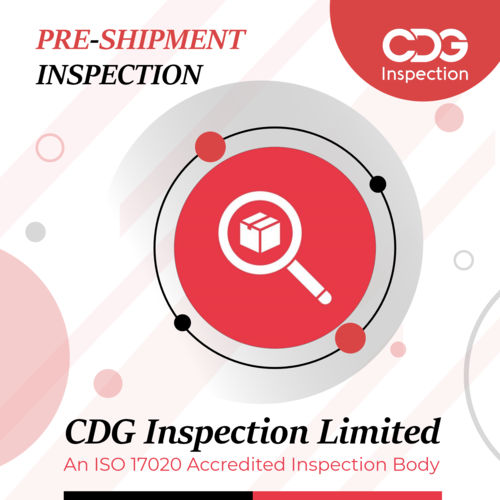Pre -Shipment inspection in Bhilai
Product Details:
Product Description
CIL Provides Accredited Pre-Shipment Inspection Services in Bhilai, Chattisgarh , India. CIL is an ISO 17020 accredited inspection body. A pre shipmentinspection is a step taken by trade operators (buyers, suppliers, agencies) toinspect newly manufactured products before they are shipped for export/import.Thepurposes of a pre shipment inspection are to, 1) Check the quantity and qualityof the merchandise. 2) Check products for any defects. 3)Ensure products meetthe safety requirements of the destination market. 4)Issue report for importand billing
Pre shipmentinspections were officially introduced in 1994 as an agreement to improveinternational trade standards under the General Agreement on Tariffs and Trade(GATT), which was later replaced by the World Trade Organisation (WTO). Anumber of obligations were included in the Agreement on Pre Shipment Inspection,stating that pre shipment investigations should be applied according to thefollowing principles, Non discrimination, Transparency, Protection ofconfidential business information, Avoidance of delays. Price verificationbased on the price of identical or similar goods in the country of exportation,in which the exporter has the opportunity to explain the price charged. Inspectionagencies establish appeals procedures, the findings of which are made availableto other exporters. Accredited inspection agencies perform pre shipmentinspections when production is at least 80 percent complete. This is your finalopportunity to take corrective action before your production is shipped, makingit an effective tool to safeguard your product against costly import risks. Thepre shipment inspection typically cover, functionality, performance,durability, overall appearance, and dimensions. Following a successful pre shipmentinspection, the agency issues an inspection report document which accompaniesthe consignment to its destination.
ImportantSteps in a Pre Shipment Inspection Procedure
Step 1.Inspection Visit, Pre shipment inspections are carried out on site at thefactory or production house. If the inspectors suspect that the products couldcontain restricted chemicals, they may advise further off site lab testing ofthose products. An example would be products suspected of containing toxicchemicals such as lead and toxins derived from azo dyes, which are tightlyregulated by Europes REACH directives and the Federal Trade Commission in theUS.
Step 2.Quantity Verification, The inspectors count the shipping cartons to verify thecorrect quantity. In addition, this step ensures that the correct number ofproducts and boxes will be sent to the correct destination; therefore, the pre shipmentinspection can be agreed upon between a buyer, a supplier, and a bank toinitiate payment for a letter of credit. The packaging is also checked toverify that the correct packing materials are being used to ensure safetransportation, and that correct packaging labels are applied.
Step 3.Random Selection, Professional pre shipment inspection services use theinternationally recognized statistical sampling procedure ANSI/ASQC Z1.4 (ISO2859 1). The acceptable number of defects in a batch before its rejected isdefined with an Acceptance Quality Limit (AQL). The AQL varies depending on thetype of product being evaluated, but the objective is to provide a balanced,unbiased view.
Step 4.Cosmetic and Workmanship Check, The first thing an inspector looks at from therandom selection is the overall workmanship of the finished products, to checkfor any immediately visible defects. Defects are typically classified as minor,major, or critical based on predetermined acceptable tolerance levels, whichare usually agreed upon between the manufacturer and supplier during productdevelopment.
Step 5.Conformity Verification, Quality control inspectors check product dimensions,material and construction, weight, color, marking, and labeling. If the pre shipmentinspection is for garments, the inspector checks whether correct sizes havebeen assigned to the shipment and that the sizes correspond with productiondimensions and the labels. For other products, dimensions may be much moreimportant, so this is when the dimensions of the finished product can bemeasured and compared with your original specifications.

Price:
- 50
- 100
- 200
- 250
- 500
- 1000+








